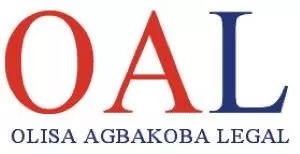INTRODUCTION
Nigeria's federal government faces significant financial challenges and actively seeks revenue sources to fund operations, address outstanding loans, invest in infrastructure, and boost the economy. The 2024 federal budget has a N9.18 trillion deficit, adding to the N87.38 trillion (US$113.42 billion) debt burden as of Q2 2023. The government's options include further borrowing – it plans to borrow N7.81 trillion in 2024 and N26.42 trillion between 2023-2026. Several new taxes have also been introduced on items like alcoholic beverages, imported drinks, vehicles, and plastics, alongside efforts to improve existing tax collection. However, one revenue option yet to be fully explored is asset monetization.
UNDERSTANDING ASSET MONETIZATION
Asset monetization refers to generating new government revenue by unlocking the economic potential of currently unutilized or underutilized public assets. Public assets include properties owned by government entities, such as roads, airports, railways, stations, pipelines, mobile towers, transmission lines, and unused land. Asset monetization offers public infrastructure access to private-sector investors through structured agreements.
Asset monetization has two key goals: First, it unlocks value from existing public infrastructure investments. Second, it utilises private-sector productivity. Asset monetization is not a new revenue generation strategy. Several countries including the United Kingdom, the United States, Australia, Brazil, France, India, and China have successfully employed asset monetization to generate revenue and meet their financial obligations.
NIGERIA'S VAST UNTAPPED PUBLIC ASSETS
Nigeria is estimated to have around 50,000 abandoned federal projects valued at over N10 trillion. This is in addition to the federal government's landed property across the country, estimated modestly at about N5 trillion. The Ministry of Finance Incorporated (MOFI), a Federal Government investment agency, holds N30 trillion worth of Federal Government assets, even though some studies show that it could be more. The Federal Secretariat in Ikoyi Lagos alone is estimated to be worth at least N120 billion and has been abandoned for over 40 years. Appropriate policy and legislative frameworks must be developed to turn these national assets into money-spinners.
A STRATEGIC APPROACH TO ASSET MONETIZATION
To unlock the value of Nigeria's vast dormant assets, the Federal Government should take a strategic approach. Firstly, it should clearly articulate its asset monetization goals and objectives. This will shape strategy and help identify which assets to focus on. Secondly, it should thoroughly catalog and assess all assets to understand their potential value. Accurate asset data will reveal possibilities, so the Bureau of Public Enterprises (BPE), Ministry of Finance (MOFI), and Infrastructure Concession Regulatory Commission (ICRC) must create a comprehensive federal asset registry.
Thirdly, the government should identify "low-hanging fruits" – assets that can be monetized through simple operational improvements without changing ownership. Examples include implementing performance metrics for management, adjusting pricing models, cutting unnecessary costs, and optimizing capital expenditure. Additionally, business models could be reinvented to generate new revenue streams, such as a state retailer shifting strategy to become a wholesaler, franchisor, or licensor. Ownership can also be restructured through partial privatization, strategic sales to partners, public listing, or long-term leases. Signalling privatization intent alone can unlock value.
Finally, the execution must be prudent and sensitive, as reforms may face opposition from stakeholders like unions, local interests, or directors. Hence, careful change management is essential. Legal and regulatory barriers may need addressing, too. Environmental, pension and other legacy liabilities should also be handled appropriately.
Also read: Strategies to Unlock Non-Tax Revenues in Nigeria
MODELS OF ASSET MONETIZATION
There are two main types of asset monetization: Toll Operate Transfer (TOT) and Infrastructure Investment Trusts (InvITs).
TOT is a contract between a public authority and a private partner, usually via PPP concessions. TOT involves transferring assets like toll roads to a private investor for a designated time frame in exchange for an upfront payment. The investor assumes full operational control and is responsible for toll collection, maintenance, etc. They bear all financial risks and rewards as if they owned the asset. Brazil has utilized TOT for major toll road concessions, including a $9 billion 30-year commercial concession of the Rio de Janeiro-São Paulo Dutra toll road in 2021. This provided a significant revenue windfall.
InvITs is a business trust registered with regulators that owns, operates and manages revenue-generating infrastructure assets. These assets generate cash flows that are periodically distributed to unit holders. InvITs are hybrids of debt and equity – they provide stable, predictable, and relatively low-risk cash flows like debt alongside growth potential like equity since returns aren't fixed. India pioneered the use of InvITs. Successful Indian InvITs include India Grid Trust (electric power transmission assets), IRB InvIT Fund (toll road assets), Power Grid Infrastructure Investment Trust (power transmission networks), and Oriental InfraTrust (road projects).
There are also other structured models like bonds, concessions and outright sales.
FRIENDLY INVESTMENT FRAMEWORK AND INSTITUTIONAL SUPPORT
Aside from selecting appropriate monetization models, successful asset monetization depends on an investment framework offering clarity and predictability to investors. This includes safeguards against expropriation plus provisions for dispute resolution and contract negotiation. A supportive institutional environment is also necessary, with adequately staffed PPP units, procurement bodies, and privatization authorities with well-defined responsibilities and coordination mechanisms to manage complex projects.
CONCLUSION
Nigeria has a prime opportunity to address its revenue shortfalls and infrastructure needs by unlocking the immense potential of its unused and underutilized assets, worth over $1 trillion. Asset monetization, done judiciously, attracts private investment to upgrade public assets and services while generating substantial income. However, success requires selecting suitable models aligned to asset characteristics and policy goals, whether TOT, InvITs, concessions or other structures. Effective monetization also relies on fair partnerships between the state, private sector and other stakeholders to diligently execute complex, multi-year deals. Furthermore, Nigeria must build investor confidence by establishing a clear, consistent, supportive regulatory system with safeguards and transparency.
The content of this article is intended to provide a general guide to the subject matter. Specialist advice should be sought about your specific circumstances.


